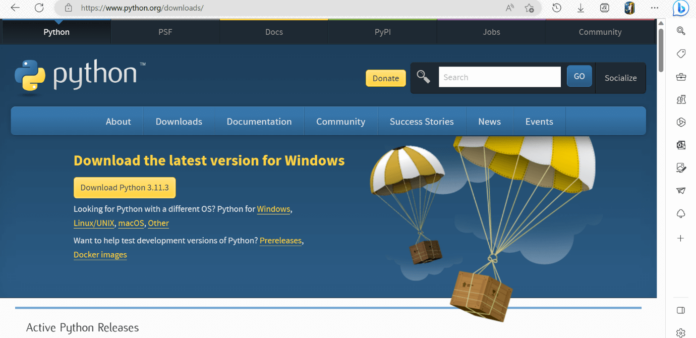Learn how to install Python on your computer step-by-step. Python is a versatile programming language known for its simplicity and efficiency. Follow our guide to install Python on Windows and macOS, and get ready to start coding in Python today!
Python is a popular high-level, general-purpose programming language known for its simplicity and versatility. It enables rapid development and effective system integration. There are two main versions of Python: Python 2 and Python 3, which are significantly different from each other.
Python regularly releases new versions with updates and improvements. As of now, the latest version is Python 3.11.3.
Python is relatively easy to learn and program in. You can write Python programs using any plain text editor, such as Notepad or Notepad++. For a more enhanced coding experience, you can use an online Integrated Development Environment (IDE) or install one on your machine. IDEs offer a variety of tools including a user-friendly code editor, debugger, compiler, and more.
To start creating Python code and executing various interesting and useful procedures, you need to have Python installed on your system. Installing or updating Python on your computer is the first step in learning how to program in Python. There are several ways to install Python: you can use a package manager, download official versions from Python.org, or install specialized versions for embedded devices, scientific computing, and the Internet of Things.
In this tutorial, we will discuss how to install Python on various operating systems, starting with Windows.
Installation on Windows
- Visit the official Python website at python.org.
- Download the latest release of Python. In this guide, we will be installing Python 3.11.3 on a Windows operating system.
- Once you click on the link, it will bring you to the download page.
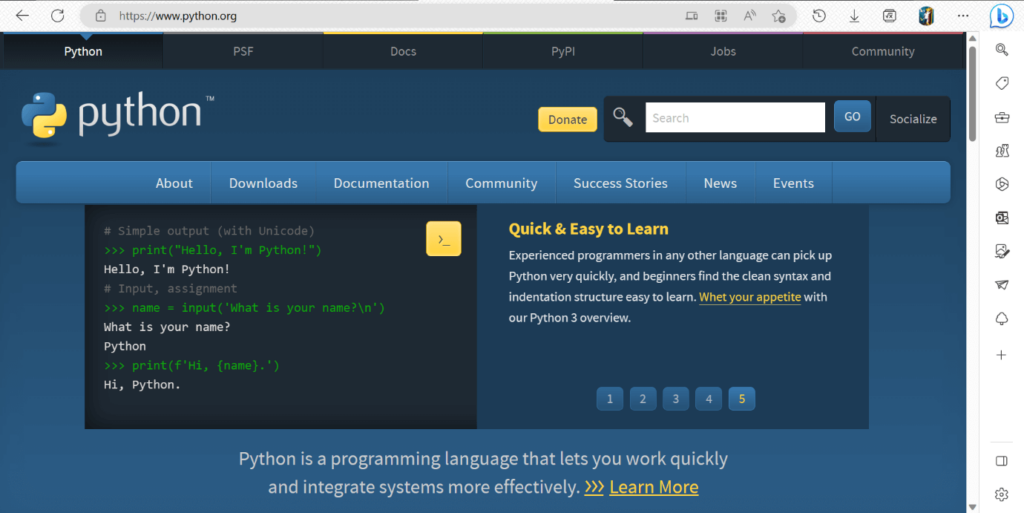
Step 1: Select the Python Version to Download
- On the download page, you will see multiple versions of Python available. Select the latest version (Python 3.11.3) or the version you need.
- Click on the download button to download the
.exefile of Python.
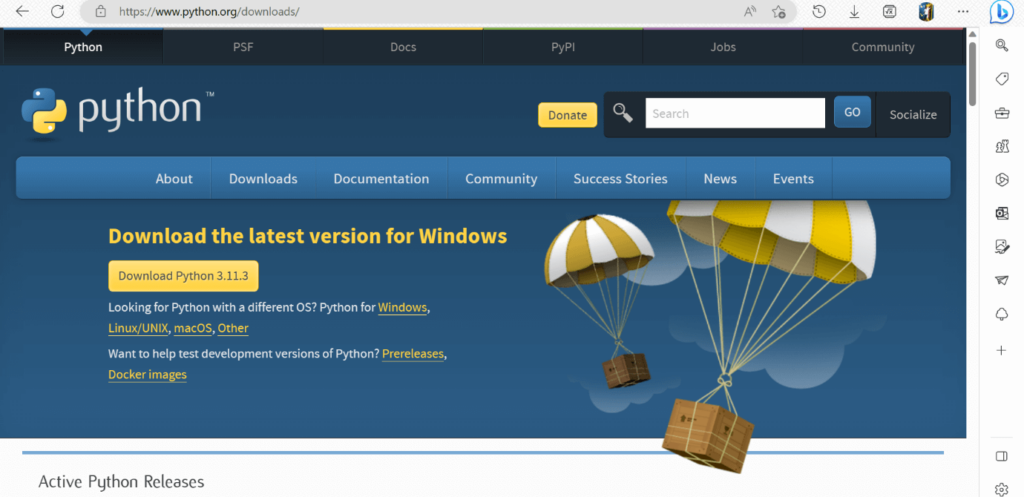
If you want to download a specific version of Python, scroll down to view the different versions available for Python 2 and Python 3. Click the download button next to the version number you wish to download.

Step 2: Click on Install Now
- Double-click the executable file that you downloaded.
- Click on the “Install Now” button to start the installation process.
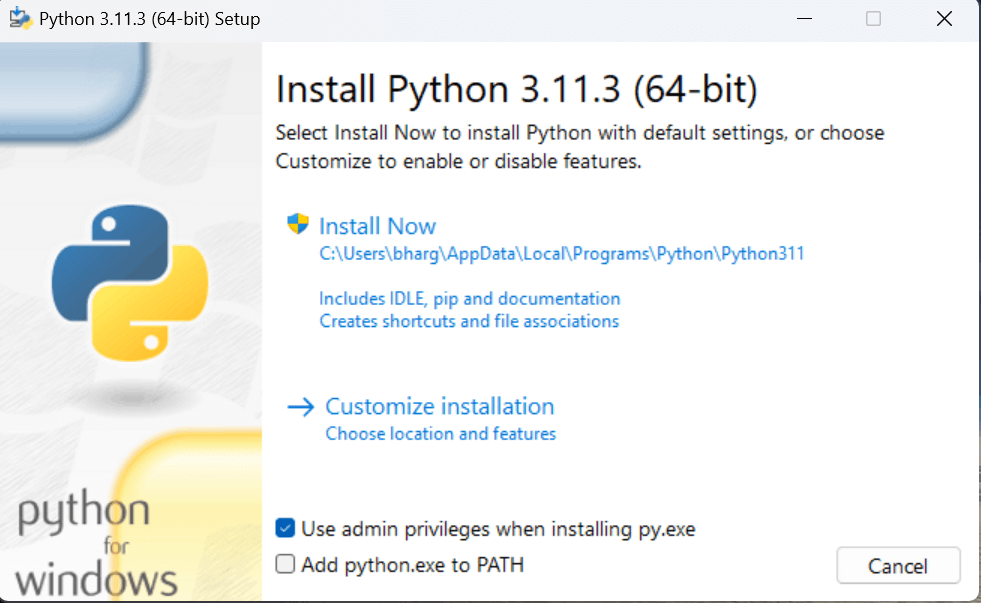
A window will open. Check the “Add Python to PATH” box to automatically set the Python path.
Next, select “Customize installation” to proceed. This option allows you to choose the desired installation location and features. Additionally, ensure that the “Install launcher for all users” option is checked.
Under advanced options, check the box for “Install Python 3.11 for all users,” which will also automatically check the “Precompile standard library” option. The installation location will change, but you can leave it as the default or change it later if needed. Finally, click the “Install” button to complete the installation.
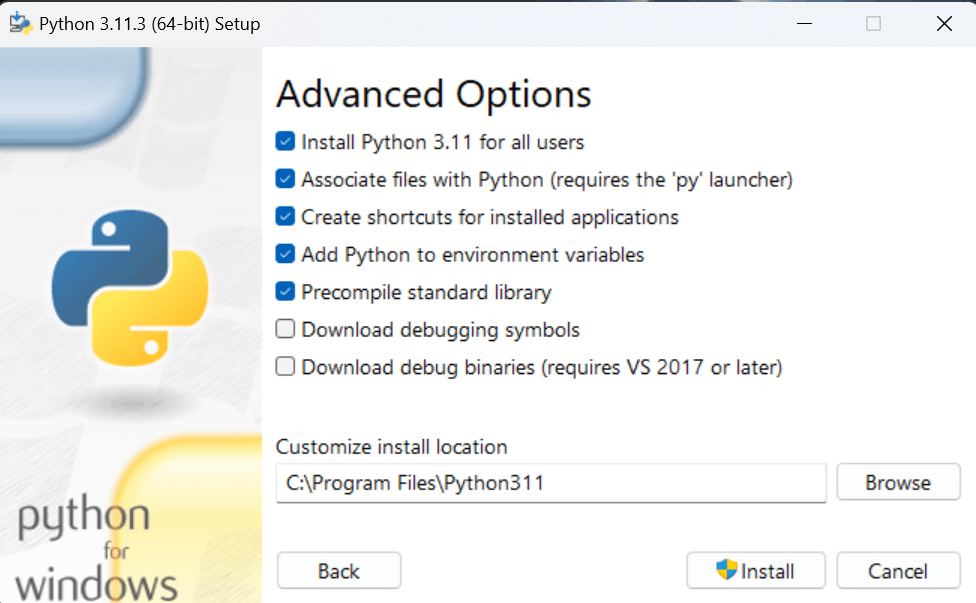
Step – 3 Installation in Process
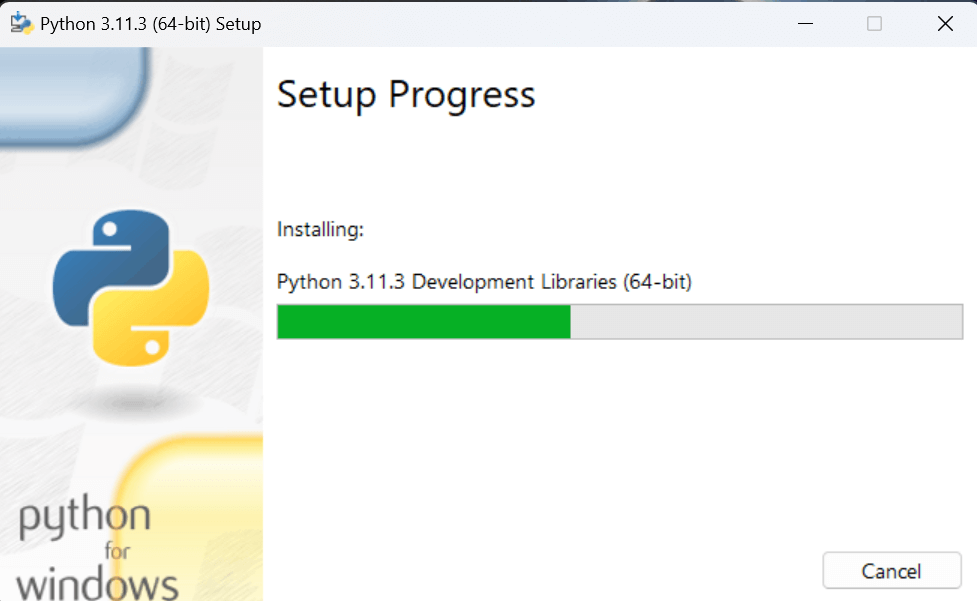
The setup is in progress. All the Python libraries, packages, and default files are being installed on your system. Once the installation is complete, a page will appear with the message “Setup was successful.”
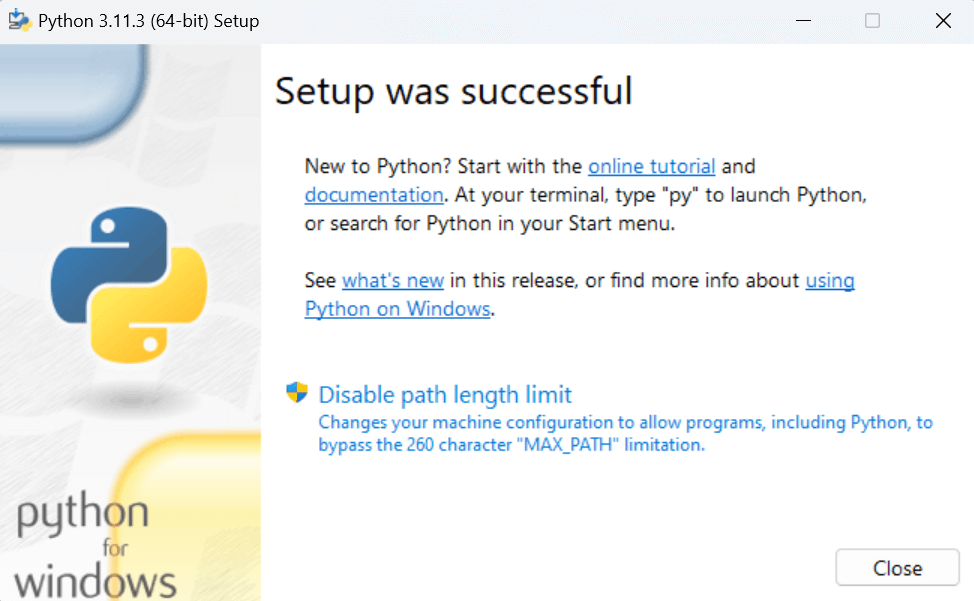
Step – 4: Verifying the Python Installation
To verify if Python is installed on your system, follow these steps:
- Go to the “Start” button and search for “cmd.”
- Open the Command Prompt and type
python --version.
If Python is successfully installed, the version number of Python will be displayed. If it is not installed, you will see an error message stating, “‘python’ is not recognized as an internal or external command, operable program or batch file.”
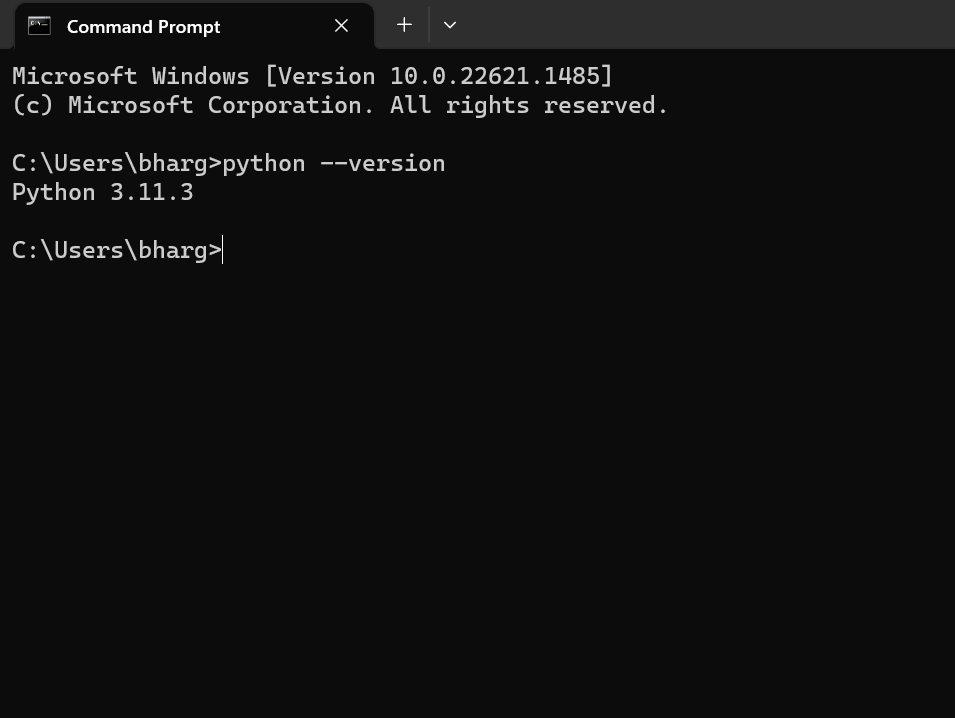
We are now ready to work with Python.
Step 5: Opening IDLE
To create our first Python program, we’ll use the interactive interpreter prompt (IDLE). To open IDLE, go to the “Start” menu and type “IDLE.” Then, click on “Open” to start working with IDLE.
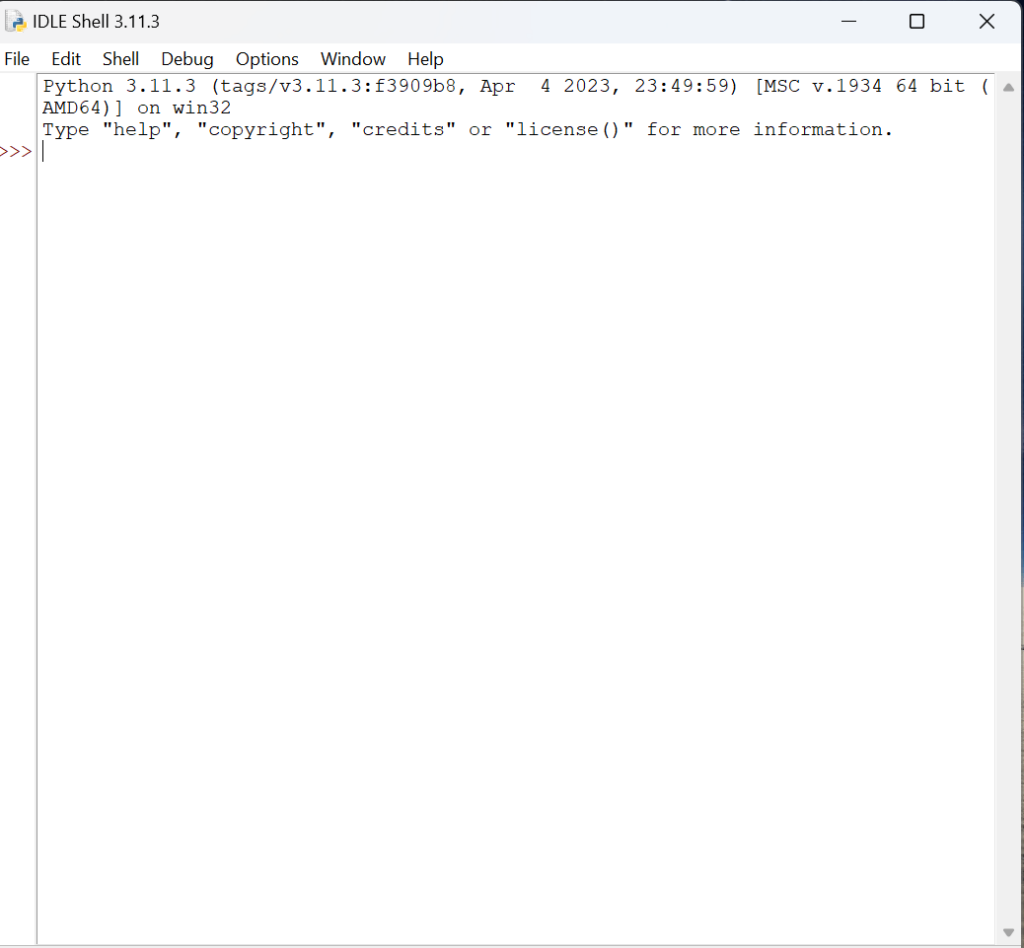
Installation on Mac
To install Python 3 on macOS, visit this tutorial and follow the provided instructions.
Installation on CentOS
To install Python 3 on CentOS, please refer to the detailed tutorial available at How to Install Python on CentOS. Follow the provided instructions to complete the installation.
Installation on Ubuntu
To install Python 3 on Ubuntu, please refer to the detailed tutorial available at How to Install Python in Ubuntu. Follow the provided instructions to complete the installation.


